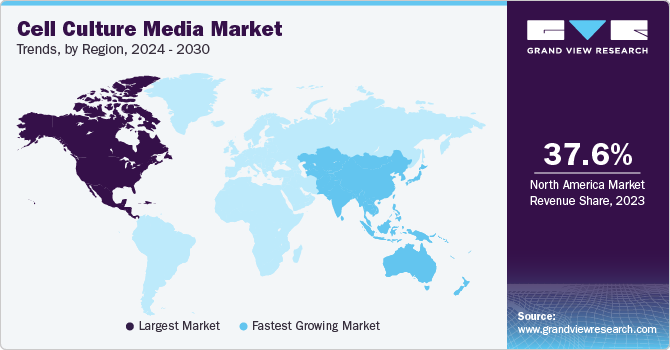
The global market for cell culture media, which are used to support the growth of cells or microorganisms in the production of biopharmaceuticals, was valued at $4.73 billion in 2023. This market is expected to grow at a rapid pace, with a compound annual growth rate (CAGR) of 12.54% from 2024 to 2030. Cell culture media is a crucial component in the manufacturing of biopharmaceuticals, as it helps cells to grow and thrive. This market segment is the fastest-growing within the overall biopharmaceutical industry, driven by increasing demand for biopharmaceuticals, supportive government policies, and rising investments in research and development.
The COVID-19 pandemic has significantly boosted demand for well-established cell-based vaccine production technologies. Additionally, it has spurred scientific advancements, particularly in the development and testing of vaccine technology. The Vero cell line, derived from the African green monkey kidney, has been widely used for the production of viral vaccines, including those for SARS-CoV variants. Lonza Bioscience offers ProVeroTM1 Serum-free Medium, a protein-free and animal-free medium specifically designed to support the growth of Vero cells and MDCK cells.
Gather more insights about the market drivers, restrains and growth of the Cell Culture Media Market
Product Segmentation Insights
Serum-Free Media (SFM): A Growing Market
The market for serum-free media (SFM) is expanding, with SFM constituting the largest segment, holding a 36% market share in 2023. SFM is a valuable tool for researchers as it enables the cultivation of specific cell types without the use of serum. This offers several advantages, including:
- Enhanced growth and productivity: SFM can often promote faster and more efficient cell growth compared to serum-containing media.
- Consistent performance: The absence of serum reduces variability between batches, leading to more reliable experimental outcomes.
- Better control of physiological sensitivity: SFM allows for precise control of the culture environment, making it easier to study specific cellular responses.
- Reduced risk of contamination: Serum can introduce adventitious agents into cultures. By eliminating serum, the risk of contamination is significantly decreased.
Ethical and Regulatory Considerations
Beyond the scientific benefits, the adoption of SFM is also driven by ethical and regulatory factors. The use of serum-free alternatives aligns with growing concerns about animal welfare, as the production of serum often involves the sacrifice of animals. Additionally, the increasing demand for gene and cell therapies has led to stricter regulatory guidelines from organizations like the FDA. SFM offers a solution by providing more control over raw materials and reducing batch-to-batch variability, ensuring the safe and reliable manufacturing of drug products.
Order a free sample PDF of the Cell Culture Media Market Intelligence Study, published by Grand View Research.
No comments:
Post a Comment